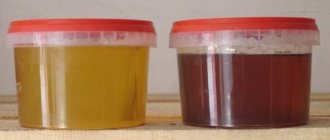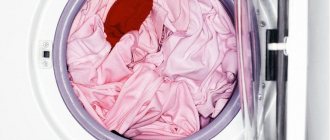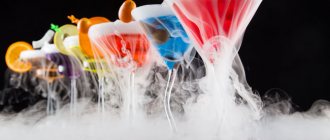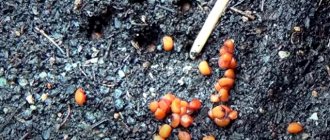Even if you are not a professional handyman, you can fix most household breakdowns yourself. For repairs, different types of adhesive compounds are used. One such product is rubber cement. It copes not only with fastening rubber parts, but also many other materials most common in everyday life.
Properties and characteristics
A special feature of rubber glue is its ability to form a flexible seam that can deform along with the parts and return to its original shape. When completely dry, the substance does not crack or shrink even under constant deformation loads.
Depending on the purpose, different types of glue have the following characteristics:
- Moisture resistant has the ability to withstand prolonged exposure to liquid. Serves for shoe repair, repairing rubber watercraft, bicycle inner tubes, leather goods.
- Elastic forms a soft, bendable layer on loose materials (thin leather, suede). After curing, it does not crack or crumble.
- With accelerated drying. This rubber composition is recommended for use for small parts in order to be able to quickly adjust the position of the elements.
- With increased adhesion. It has adhesion properties to difficult surfaces. Used for installation in construction and auto repair.
- Solvent resistant. Serves for fastening parts that come into contact with various types of lubricants and gasoline.
Rubber adhesive also has a number of disadvantages:
- not resistant to scratches and cuts;
- has a pronounced chemical smell;
- after application using tools they are difficult to clean;
- may cause irritation and burns on exposed skin.
Useful video on the topic:
General characteristics of rubber adhesive
Essentially, rubber glue is a natural rubber that dissolves in special substances. After complete drying, the glue has a rubber-like structure.
As a rule, this adhesive contains polymer resins, special vulcanizing and cross-linking components.
Rubber glue is used both in repair work and in home use, most often for:
- Repairing a bicycle tube or rubber boat;
- Shoe and clothing repair;
- Floor covering fastenings;
- In the manufacture of vacuum products;
- Manufacturing and repair of furniture.
Some disadvantages of rubber glue are noted:
- It forms a not very beautiful glue seam.
- Due to the fact that there are quite a lot of solvents in the composition, it has an unpleasant aroma.
- It's quite difficult to apply.
- If handled incorrectly or carelessly, it can burn your skin.
If you smear any part of a product or material with it, it is almost impossible to wash it off.
Purpose
The adhesion solution for rubber has household and industrial purposes. In everyday life, rubber glue is actively used for repairing furniture, areas of floor coverings, restoration of leather goods, decorative interior items, and sports equipment.
Rubber mortar is suitable for fastening not only homogeneous surfaces, but also elements with different structures. For example, tiles and glass, wood and metal, rubber and plastic.
In industrial applications, rubber adhesive serves as a fixing component in the shoe industry, construction, watercraft, sports and recreational products.
Peculiarities
Most often, rubber adhesive is used to join elastic parts. The fact is that after hardening, the structure is really similar to rubber. However, when purchasing such glue, you need to try to ensure that its composition is similar to the parts being joined.
The composition of rubber glue can include not only natural rubber, but also synthetic rubber. Ethyl acetate, chlorine-containing or organic compounds can be used as a solvent. The recipes of all manufacturers are different, so the properties of glue from different brands may differ.
The main feature of rubber-based glue is that it can be used with paper, textile, glass, wood, metal and other materials. It is widely used in the footwear, furniture and automobile industries. However, this glue can also be purchased for household purposes.
Kinds
Based on the presence of dense (insoluble) residue in the substance, there are two categories of adhesive solution: class A - up to 8%, class B - up to 12% dense residue.
The composition is also classified according to the characteristics of the rubber component. The mixture can be based on:
- Natural rubber. This material has insufficient resistance to aggressive substances and temperature changes. It is used for minor home repairs of items made of leather, cardboard, rubber, suede, and fabric.
- Neoprene solution. Has high resistance to abrasion and open fire. Has adhesion to metals, plastic, glass, fabrics.
- Silicone rubber. For polymerization, exposure to a hardener - tetrabutoxylane - is required. This mass is used to work with rubber of a large area and a homogeneous structure.
- Nitrile butadiene rubber. It can create a rigid and elastic connection on packages, usually designated (T - hard, M - soft). It is water and oil resistant.
- Synthetic styrene composition. It has low adhesion rates and serves as a raw material for the production of an adhesive layer for labels, adhesive tape, and adhesive tape.
The remaining types of mixtures are not common in everyday life and are used for industrial purposes.
We recommend videos on the topic:
Manufacturers rating
Rubber glue is common in all industries, so foreign and Russian brands are similar in their properties.
- Rubber glue – 4508. The composition is designed for the repair and repair of boats and inflatable cylinders of catamarans. Has high viscosity and fast setting. It takes 1-3 minutes for the two layers to adhere. The seam created is abrasion-resistant, waterproof, and does not crack at sub-zero temperatures. A jar of 120 ml, costs from 110 rubles.
- Rubber adhesive made from natural rubber produced by Novbytkhim. Transparent substance, leaves virtually no traces after gluing. Forms a thin and elastic seam. The adhesive is designed for applied creativity when gluing fabrics, leather, suede, paper, cardboard. Price for a 45 ml tube starts from 27 rubles.
- "Moment" waterproof rubber adhesive. A universal product for gluing and repairing objects made of rubber, plastic, PVC, wood, metal, ceramics. Creates a strong elastic connection that is not destroyed by water. A tube costs 125 liters. from 220 rub.
- Rubber Reaktor adhesive is a universal waterproof adhesive, in addition to gluing, it seals seam joints to protect against water. Used for repairing boats, shoes, travel equipment, and bicycle inner tubes. A 15 ml tube costs from 50 rubles.
The best rubber adhesives
Below is a list of brands and manufacturers of rubber glue that have proven themselves to be the best:
- Glue 88 N is a rubber glue from a Russian manufacturer, it has good strength and is excellent at gluing rubber to metal and other materials.
- Glue 88 CA is one of the most popular rubber adhesives, which consist of rubber without various impurities. Able to fix rubber well with concrete, wood, glass, as well as for working with leather and fabric.
- Radical is a rubber adhesive that is highly water resistant and not afraid of high temperatures. Great for repairing kayaks, rubber boats.
- Loctite 406 is a rubber adhesive that has a low viscosity but works quickly. This glue is recommended for gluing to plastic.
- Gummi rubber adhesive is made from natural rubber. This glue is quite waterproof and is recommended for gluing rubber and various inflatable objects.
- Moment-1 is one of the most popular rubber adhesives, but it is very toxic and flammable; you should work with it following all safety rules. This glue is considered universal, as it glues surfaces of various types.
How to dissolve
It happens that the glue has thickened and a more liquid consistency is needed. To do this, the composition is diluted:
- acetone;
- butyl acetate;
- solvent for polyurethane paints Snezhka.
Add solvent gradually, in small portions. Mix well after each addition. If the consistency is too liquid, a strong connection will not work.
Not all types of rubber glue can be diluted with a solvent. Some substances coagulate. Before diluting the whole mixture, try mixing a small volume with the solvent.
Liquid rubber
Not so long ago, an insulating material called “Liquid Rubber” appeared. It is a substance whose consistency resembles an emulsion. Liquid sealant is used in construction for hydro and vapor barrier of foundations and walls.
When applied, the sealant is evenly distributed over the surface and creates a continuous impermeable layer. Liquid rubber is easy to apply, as it does not require heating and has high adhesion to all building materials.
Methods for applying rubber glue
Cold
In accordance with the instructions, this is applied to the surface of the part in a thin layer. After this, it must be allowed to dry. 20 minutes is enough for this. After time has passed, the procedure should be repeated. As soon as the second drying time has passed, the surfaces coated with glue are connected to each other. In this case, it is necessary to apply some force for two to three minutes. After this, the connected parts must be left at rest for 24 hours.
Adhesive for cold vulcanization of rubber
Hot
Glue 88 is a heat-resistant adhesive and therefore hot gluing is possible. In accordance with the instructions, the glue is applied to the surface heated to a temperature of 80 - 90 degrees. After this, the parts must be connected to each other and left alone for three hours.
Glue 88 and its derivatives are distinguished by their versatility and ability to firmly bond surfaces made of different materials. Its undoubted advantages include the fact that it is quick-drying and waterproof.
Useful tips
To ensure reliable gluing, there are several recommendations:
- Choose the volume of glue packaging based on the scale of the work. After opening, the composition begins to thicken and lose its plasticity. If you need to treat a small area, a 15-30 ml tube will do.
- Before application, be sure to dry the parts thoroughly and degrease with acetone or gasoline.
- When using the hot method, make sure that the parts do not deform or melt when heated.
Instructions for use
First of all, you need to prepare the surface of the product. To do this, it must be cleaned and degreased. The fact is that various contaminants contribute to a decrease in the connecting ability and reliability of the composition. Simply put, the parts will soon have to be glued together again. Special cleaners or solvents are used to degrease the surface.
It is important to follow the instructions for use when using rubber glue. As a rule, it is indicated on the packaging or in a special insert. If the technology for using glue requires heating it to a certain temperature, then all manipulations should be carried out outdoors. To heat the composition, it is best to use a technical hair dryer.
Do not use rubber cement near an open flame. Almost all compositions are flammable, so safety precautions must be strictly observed.











